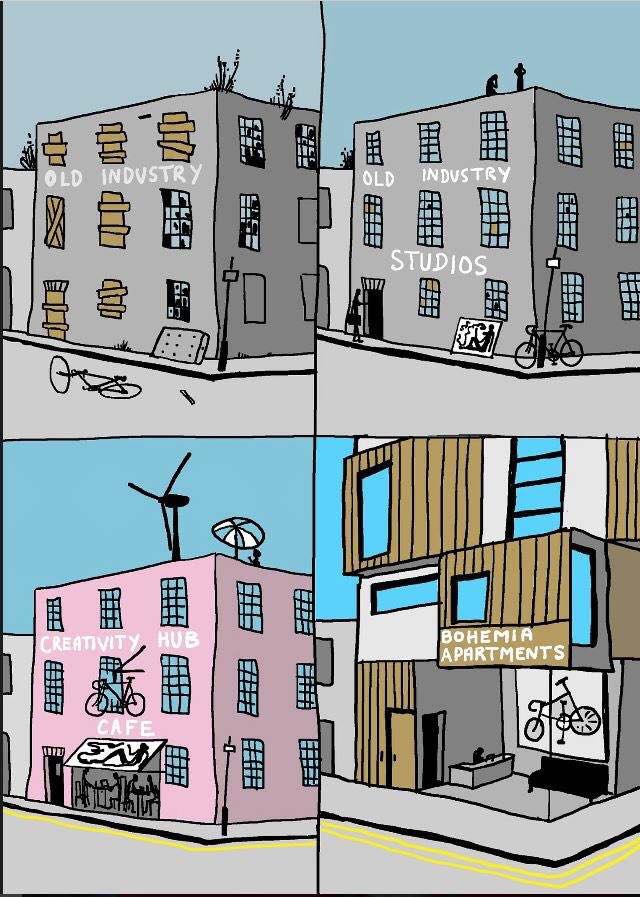
Are small music venues being gentrified? This question is central to Trine Heide’s essay, MA student at the University of Copenhagen. She tackles the subject of Urban Theory and examines the links between gentrification and small music venues in the UK and in Denmark.
What is gentrification?
Gentrification is a process, where local communities, people and actors are being more or less forced out of their homes or area. Gentrification occurs when an area becomes attractive to other groups of people with a higher income. The reasons for this lie within the economy and capitalistic system, where growth in real estate prices and rent, property taxes and even in the retail stores around the area, leads to a change in population.
Gentrification also occurs when politics and urban planning implements a wish for sanitising an area of the city, which is known as regeneration. Regeneration implies the renovation of houses, which increase prices and reinforces the shift of residents. Gentrification then, does not only affect people being forced out, but also the area, which is left without its usual users. This can have severe effect on small shops, venues and urban spaces when the area become more economically homogenous.
As live music venues are a crucial part of urban identity, economy and life, they are therefore essential to examine in order to understand the gentrification processes.
What is the effect of gentrification on small music venues?
- Real-estate business involves the creative scene actors as temporary users of old factory buildings, destined for upgrading the project’s marketability. Small music venues are used for their economic and symbolic added value. They are not seen as places artistic and social spaces.
- Gentrification increases rents which leads to small music venues closing because they cannot afford it anymore.
- The regeneration process of a neighbourhood leads more people to live closer to small music venues, increasing the risk of sound complaints.
- Gentrification and the complex legal requirements of venues today may be a reason why the music industry invest more and more their creativity in making festivals rather than in running a venue.

How to break this circle?
A first step can be by inscribing the protection of live music venues in regulations with the Agent of Change principle. The Agent of Change, as implemented in the UK, is what you should do and not what you must do. It is not a law as such, only a recommandation, and work still needs to be done to give Agent of Change legal recognition.
Implemented in the UK by Music Venue Trust, Agent of Change says that the person or business responsible for the change is responsible for managing the impact of the change. This means that an apartment block to be built near an established live music venue or club would have to pay for soundproofing, while a live music venue or club opening in a residential area would be responsible for the costs.
The Agent of Change is a helpful ressource regarding the protection of live music scenes in the context of urban densification. Learn more about it on our webinar hosted by Mark Davyd, CEO of Music Venue Trust.
Bibliography and resource on gentrification:
- Dan Cole, “Music stands up for… Berlin’s Threat to Live Venue (or how Berlin started to fight back)” in Europavox, 2 August 2018.
This article presents the gentrification process Berlin is going under as well as some interesting actors and initiatives which resist it. Access the article here - Trine Heide, Gentrification and Small Music Venues. The Art of Financial Crisis in Denmark and the UK. MA student thesis, University of Copenhagen, 2016.
- Fabian Holt, Rock Clubs and Gentrification in New York City. IASPM@Journal, vol 4, no 1. pp. 21-41, 2014.
- Live DMA Working Group on “Authorities Relations” | Report 1 & Report 2
